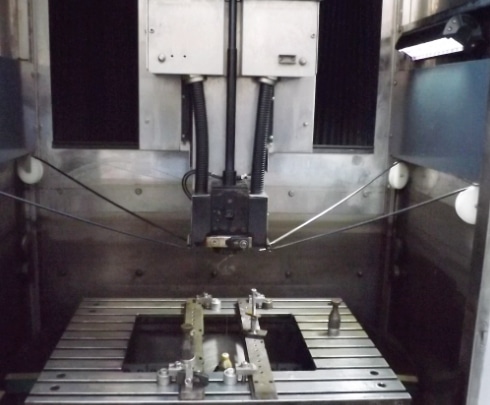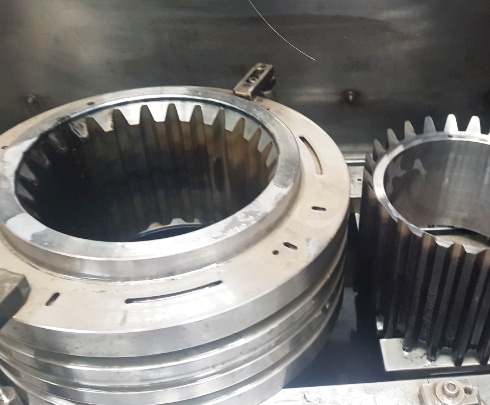
Wire erosion is not a new process - in fact, the erosive properties of an electrical discharge were first discovered in 1770 by Joseph Priestly. Today, wire erosion is a popular method of cutting hard materials, or completing a detailed cutting design. During wire erosion, a relatively thin wire is fed into a workpiece. A high-frequency electrical voltage is applied across the wire, which creates a spark between the wire and workpiece, burning off small sized particles of material as it does so. Deionised water and a constant feeding of wire is used to avoid the erosion of the wire and the process shorting out.
Wire erosion is a proven solution to when traditional cutting alternatives cannot solve your machining problems. With decades of experience under our belt, you can trust Bellcliffe Engineering to provide reliable and innovative machining every time.
Capabilities & Technical Specifications
Bellcliffe Engineering uses a Hexagon Absolute Arm to aid our machining services, providing accurate measurements which speed up the calibration process. This coordinate measuring machine is accurate to within ± 9 Microns. In addition to this, during the design and manufacturing process, we use CAD and CAM software to ensure accuracy and quality of your product is our priority at every stage.
Bellcliffe Engineering can provide these services world wide, and have over 100 combined years of experience supporting our expertise and skills.
For our wire erosion operations, Bellcliffe Engineering uses a 330F Robofill Wire Eroder, 400mm W x 300mm L x 400 mm H.
Alongside this, we also provide the following machining processes

Applications
Our wire erosion services are available for a number of sectors, including, but not limited to:
Got A Question? Get In Touch
FAQs
There are three different types of Electrical Discharge Machining.
Wire EDM uses an electrode, which is fed into a workpiece through a wire, to cut a metal part; this electrode creates a spark which is able to cut away at the metal workpiece. The material being cut could be anything from soft copper alloys to hardened steel. With wire EDM, the wire moves at a constant speed throughout the workpiece allowing for greater consistency.
Sinker EDM is also known as die sinker EDM; it works by using a die to sink down into the workpiece and create a shaped cavity through the discharge of a voltage. Sinker EDM uses an electrode that floats on a pool of dielectric fluid. The removal of material occurs when high-density ions are sent into the pool of dielectric fluid separating the metal. This process is typically used for the cutting of complex shapes.
Hole drilling EDM is a wire EDM process in which a hole is drilled in the material from above, similarly to sinker EDM. This process is very popular because it allows for greater accuracy and a much deeper penetration, without creating burr on the edges of the cut, which can occur during traditional drilling methods.